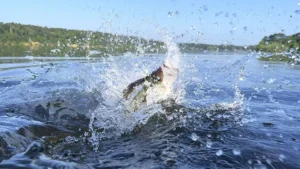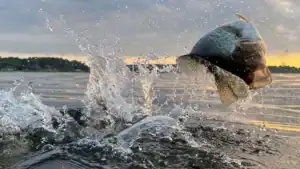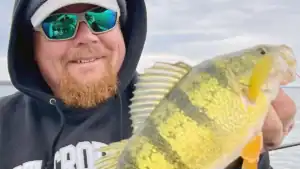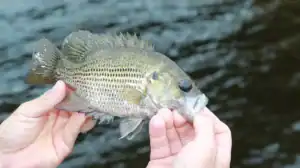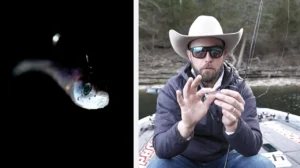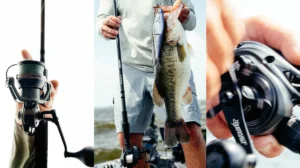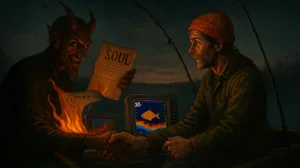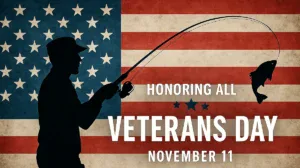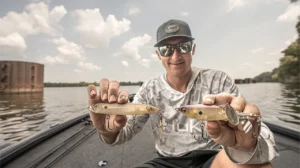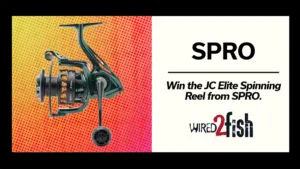On a hot summer day, Matt Glover attracted a crowd when he pulled into a marina at Lake Jacomo in Missouri and lifted a big stringer of crappie out of his boat’s live well.
Fishermen who spent hours parked over brush piles, only to catch a few fish, were in awe. Their excuse of “it’s too hot for the crappie to bite” quickly evaporated.
“Livescope?” one fisherman asked.
Nope, Glover answered.
“Live bait?” another asked.
No again.
Trolling to Beat the Heat

Glover caught the 20 crappies he was about to filet trolling crankbaits he custom-painted. It’s become a summer tradition for the fisherman from Lone Jack, Mo.
When the crappie leave the banks and start roaming the open water on the main lake, he stays on the move.
“When they move out after the spawn, they just want to eat,” Glover said. “They’re scattered and they’re chasing shad.
“When you run across those big balls of shad, generally the larger crappie won’t be far away. Sometimes, you have to cover some water before you can find them. And it’s not like you’re going to find them all grouped up in one spot.
“But if you stay on the move, you can pick off some good fish.”
Glover had the proof on his stringer. He and I spent the morning trolling the main lake on Jacomo, a 970-acre reservoir built in the 1950s.
Before the sun even peeked over the treeline, Glover had several rods baited with the bright-colored crankbaits he designed trailing behind the boat.
He used his trolling motor to keep them wobbling through the 20-foot-deep water at a steady clip.
“My 3-inch-long crankbaits will run about 16 feet down on 8-pound mono [line],” he said. “I try to go 1.6 miles per hour. That way the crankbaits will run true and have just enough action to them.”
As Glover’s boat passed over a deep brush pile, one rod bent sharply, then another did the same. We both reeled in healthy crappie and plunked them in the live well.
“A double,” Glover said. “That’s what we’re after.”
But Glover trolled his crankbaits over other areas that were full of fish, according to the screen of his fish finder, without getting anything to hit. Such is the life of a troller.
It takes the right conditions, too. Early in the day, Jacomo was almost glass calm, not good for trolling, Glover said. But as the sun showed up, a light wind produced a steady chop on the water. It was no coincidence that the fish started biting.
Glover’s path took him over brush piles, off points and along drop-offs. His setup was refreshingly simple; “something anyone could do,” he said.
Tools of the Trade

Instead of expensive reels with line-counters and high-dollar rods, he used old baitcasting equipment from his bass fishing days. He used high-vis bright-yellow line and placed his crankbaits a long cast behind the boat.
The key to his success, he said, has been the crankbaits he paints and sells through his Glover Lures and Replicas business.
Not long ago, Glover was a truck driver who fished in his spare time. He had been at it for almost 20 years and he made good money. But he was ready for a change so that he could spend more time with his wife and two small children.
He started experimenting with an airbrush kit he purchased years ago and tinkered with painting fish mounts and lures.
With the help of his good friend and fellow fisherman Doug Piper and nationally known taxidermist and wood carver Don Frank, he was happy with his first efforts.
“Don gave me a couple of old skin crappie mounts to practice with and I put pictures of my work online,” he said. “I got some positive response, and one person said I should try painting lures.
“That just planted a seed. I tried it and I really enjoyed seeing what I could come up with.”
Glover started ordering plastic blanks from suppliers and launched a brand. His twin brother Micah built him a paint booth in his basement and Glover went to work with his airbrush and even a paint brush for detail.

Before long, Glover had 16 different color schemes of trolling crankbaits with such colorful names as Pink Diamond, Shaddy, Walleye Wallop, Lemonade, Tiki Hut and Cabo San Lucas.
“Micah and I would go to Jacomo to test each color scheme,” Glover said. “If they caught fish, they made the team.”
But those trolling crankbaits are only part of Glover’s new business. He also paints a variety of bass baits, everything from glides to squarebills to topwater to lipless lures.
And he continues to paint replica mounts for fishermen who want to release their trophy catches and send Glover a photo of the fish so that he will be able to paint an accurate mount.
It’s a true family business with Glover’s wife Stacy and brother Micah involved. For Glover, who does all the artwork, it’s time-consuming. But he still loves his new profession, especially when he does his testing.
“It’s fun to catch them on a lure I’ve made,” Glover said. “It shows me I’m doing something right.”


